What does ‘off the beaten track mean to you’? Depending on how adventurous you are, the phrase can mean different things to different people. It can be scary to choose the path less travelled by, but the benefits from getting off the beaten track in Scotland are exhilarating.
But, this certainly doesn’t mean you need to skip all the top sites like Loch Ness. For some, getting out of cities is rural enough and therefore Loch Ness is a great choice. But for those feeling adventurous and wanting to get a little more remote, we can help you there.
Wanting to find a little peace and quiet is the most natural thing in the world whether you’re most at home surrounded by nature, a city dweller or somewhere in between. And arguably, there is no better place than the Highlands of Scotland. Known for its epic beauty, contrasting scenery and out of this world views, you’ll soon find yourself where the air and water are fresher and the most prominent noises keeping you company is nature at its finest.
The Cairngorm National Park is the ideal base for you to experience and explore the remoteness the Highlands can offer. Depending how far off the beaten track you want to get you’ll find an array of options suited for all fitness levels and ages. Offering options to be guided, or self exploration if you prefer, Scot Mountain Holidays has it all.
We understand that only you know what getting off the beaten track means. But, Scot Mountain Holiday trips, by definition are all off the beaten track. It’s unlikely you’ll see crowds of people during any typical day with us. Choosing one of our trips is a great way to decide if the more unusual spots and a more active vacation is the way forward for you.
Whether you’re after hiking, mountain biking, walking or countryside relaxation, you’ll find it here. We can help organise a tailor-made trip for you, friends and family. Or, you can join one of our scheduled trips where you’ll meet like-minded people and gain friends for life. The choice is yours.
Walking comes in many different guises from dog walking to marathon walking. Perhaps then there’s a reason why “hiking” is becoming much more common usage for wild walking, long-distance and mountain walking. Hiking in summer and walking in winter can almost be classed as 2 different sports.
You might be a keen walker. Alternatively you might have started to develop an interest in walking later in life. You might be walking for health reasons or you might be Munro bagging. Whatever the reason, once you turn to hiking in the mountains, sooner or later you might want to extend your season so you can continue to hike all year round. You’ll want to go walking in winter.
Hiking in winter has its own distinct rewards from unending views in crystal, clear air conditions to solitude and glistening fresh snow, unblemished by evidence of other people. There are however also obvious hazards and also some aspects to winter walking/hiking, which you might not have considered.
In Scotland the winter mountains will almost invariably have snow on them for at least part of the winter. We live in hope that the season will be longer and the snow will remain, but this year, 2017, even the most stubborn of snow patches melted away completely. It’s nearly the end of October already and there’s as yet no sign of the white stuff returning. Still if you are considering some winter hiking, make sure you have received some formal training in the skills you need to remain safe in winter conditions. There is nothing more sapping than cold weather.
There are a surprising number of avalanches in Scotland but most of them go un-witnessed and hence unreported. Fortunately we do have a very good avalanche information service, especially in the Cairngorms. Throughout the winter they produce a daily report of the avalanche risk. With formal training and a bit of experience, you can learn to interpret the report so that you pick the safest route for the day.
Making sure you have the proper boots for winter is essential. “Your boot is as much as tool as your crampons and ice axe” is a sentence often repeated by our own Andy Bateman when he is talking to winter novices. You must have stiff boots rated as B2 or above. However, the problem with the boots is that they weigh a lot more than boots you will be used to walking in and they are so much stiffer that they force you to walk in a slightly different gait from usual. Over the course of a couple of days, the difference in the boots can take its toll on you. You legs and feet will feel a lot more tired than they usually do for the same amount of summer walking.
Take care when wearing winter boots. Try to baby your feet a wee bit and if you have the opportunity a little bit of simulation will stand you in good stead, even if people give you funny looks when you clump along the beach promenade or up and down the city streets in monster boots.
Your pack, whether for an expedition or a day walk, is inevitably going to be bigger in winter. Not only will you need more in your lunch, but you’ll also need space for the additional gear: your ice axe, your crampons, thicker, warmer gloves etc. You’ll need to be ready for the extra weight.
TOP TIP: always try to pack your crampons within your pack as if you have them tied to the outside of your pack, you run the risk of losing one or both of them quite easily.
In winter Scotland’s hills become mountains due to the severity of the weather conditions. There are regularly winds over 100 miles an hour in storms and though you might not plan to be out in conditions like that, even experienced mountaineers can get caught out. A friend of ours was once out in the Cairngorms when the weather turned. He and his party ended up almost crawling out as they were getting blown over when they stood up. The wind was even strong enough to take a head torch off one of their heads.
It’s not only the colder weather which helps to burn up more calories. You do have to carry more stuff with you when you go out hiking in winter. The additional weight will help to burn more calories at the end of the day. But always remember, if you put more calories in than you consume you won’t be losing weight. Just heading out for a hike is not a guarantee that you will lose weight – if that is your aim. You need to balance out keeping warm with the number of calories you consume. You don’t want to be cold, but neither do you want to overeat.
How many calories are burned by being cold?
Calories burned in cold weather
Cold air carries less moisture than warm air and therefore produces better visibility. It is warm air streams which bring precipitation. There is some truth to the statement that it is too cold in the arctic to snow.
Fewer people enjoy going out in the cold weather despite the fact that we have amazing gear now which can keep us warm in virtually any conditions. However, this means that those of us who do go out can enjoy a real sense of solitude and space.
There’s nothing better than sharing the story of the day. The warmth of a fire and a cup of tea at the end of the day will be appreciated so much more after being out in cold conditions.
When people come back after a day out in the snow, they almost always have a novel story to share. The risks are greater than in the summer, but then this enhances the benefits too.
If you stop going out in the colder weather, it may be more difficult to get back to your regular hiking than before. The risk of losing your fitness over the winter is greater as you get older. Walking on the treadmill isn’t really an adequate substitute, but if there’s no other choice …
I don’t know why the mountains seem so much more spectacular when covered in snow, but they do. Maybe it’s because they look more pristine. Maybe it’s because if gives them more shape. Whatever the reason, a little snow seems to add some “je ne sais quoi” to the mountain scene.
We specialise in guided walking holidays and walking skills here in Scotland.
If you’d like to leap in to winter at the deep end, why not think about a snow hole expedition: not an igloo, a snow hole; not an emergency shelter but a deliberate night out in a purpose built shelter. Check it out:
We’ve scheduled a new trip for winter 2024. We’re going to be based in Glencoe for a week in March bagging some tasty Munros. It’s a new venture for us so we’ve looked for some spectacular images to illustrate the trip. On a search of Flickr, we found John McSporran. John has kindly agreed not only to lend us some of his spectacular Glencoe images, but he’s also written a brief summary of why he personally finds Glencoe such a fascinating area to explore.
I first began photographing Glencoe about 20 years ago. It is one of those places where the weather is always changing, the light can be fantastic one minute and terrible the next. It can be mean and moody, mystical and magical, but always interesting and frequently awe inspiring. Even on horrible days, that fleeting moment when a beam of light strikes the mountains makes it all worth while.
About 10 years ago I realized that if I wanted the best photos of Glencoe I needed to get high. That’s when I began climbing its mountains. Then I realized that I needed to be ‘up top’ for sunrise and sunset (the golden hours). That’s when I climbed in the dark using a head torch. Then I began to camp out up top. Then I went ‘full on’ and climbed in the dark in mid winter using an ice axe and crampons – just for that one great photograph. Carrying 25 kilos / 55 lbs of camping and photography gear to the top of a mountain can be hard (particularly when in your late 50’s), but the experience of stunning sunrises and sunsets in Glencoe makes it all worth while.
I have met hundreds of people on the Scottish mountains, some I meet many times, some only once, but there is a community spirit amongst those who climb mountains, especially photographers – solitary committed people whose hard shell cracks as soon as we begin to swap stories.
My favourite Glencoe mountains are Beinn a’Chrulaiste and Buachaille Etive Beag. They are not the hardest or the tallest, but they provide the best viewpoints and give sweeping panoramas of the others.
Other favourite locations are:
There are so many great locations, you are spoiled for choice.
We have a saying in Scotland – if you don’t like the weather, wait 15 minutes, it will change. I hope you enjoy your visit to Glencoe.
For more choices of walking holidays in Scotland, head over to our main holiday page
For more information on walking in the Highlands
Winter has descended upon the Scottish Highlands, the familiar hills evolve into awe-inspiring mountains, blanketed in a pristine coat of snow, setting the stage for a winter hiking experience like no other. The landscape, now a picturesque haven, invites adventurers to traverse its snow-laden trails, discovering a unique blend of tranquility and adventure. However, one must always keep an eye on the ever present dangers inherent in winter.
Winter hiking in the Highlands offers a striking contrast to other seasons. The once-green paths are now transformed into a pristine canvas of white, waiting to be explored. Intrepid hikers, armed with waterproof gear and insulated boots, embark on journeys that unveil the Highlands’ winter charm.
Traversing the snow-covered trails is a sensory delight. The crunch of snow beneath each step echoes through the valleys, and the brisk winter air invigorates the senses. The hills, now adorned with a glistening layer of frost, create a visual spectacle that adds an extra layer of magic to the hiking experience.
Never forget though that you need to be extra prepared before you head out into the winter hills. Our top tips include:
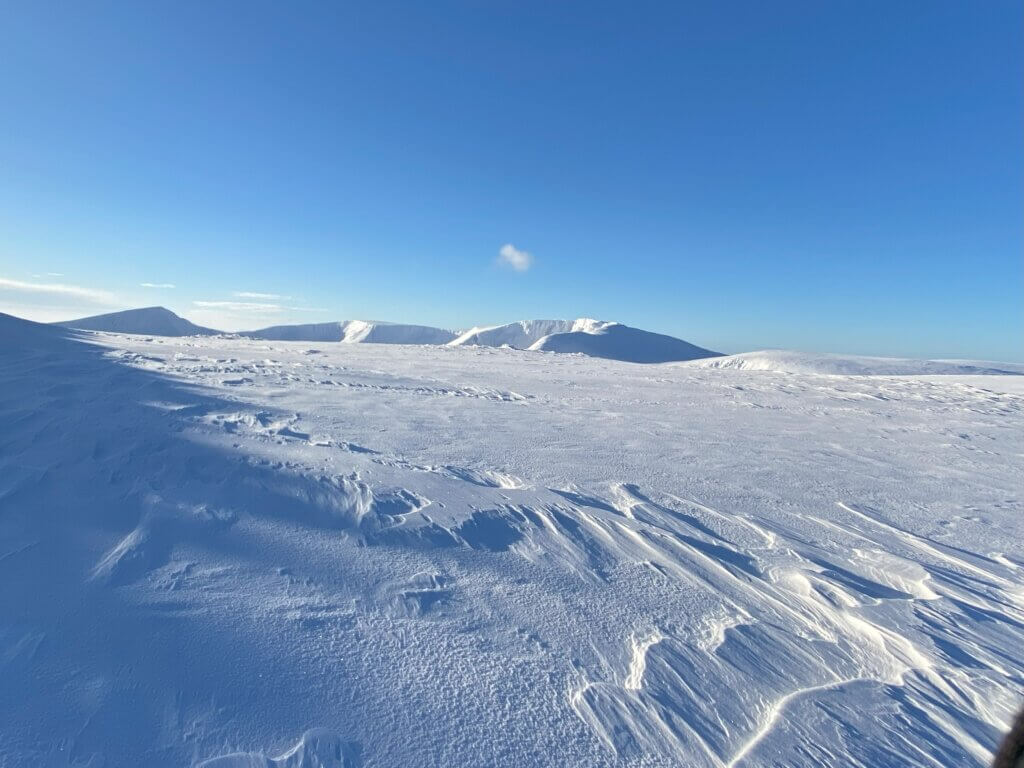
Cairngorm plateau, New Year Winter Walking 2022 – 2023
Preparation is key for those eager to embrace the winter landscape. Layered clothing, including waterproof jackets and insulated gloves, become essential companions (see our blog). As the landscape transitions from hills to mountains, the weather can be unpredictable, and hikers must be equipped to face the challenges that come with the season.
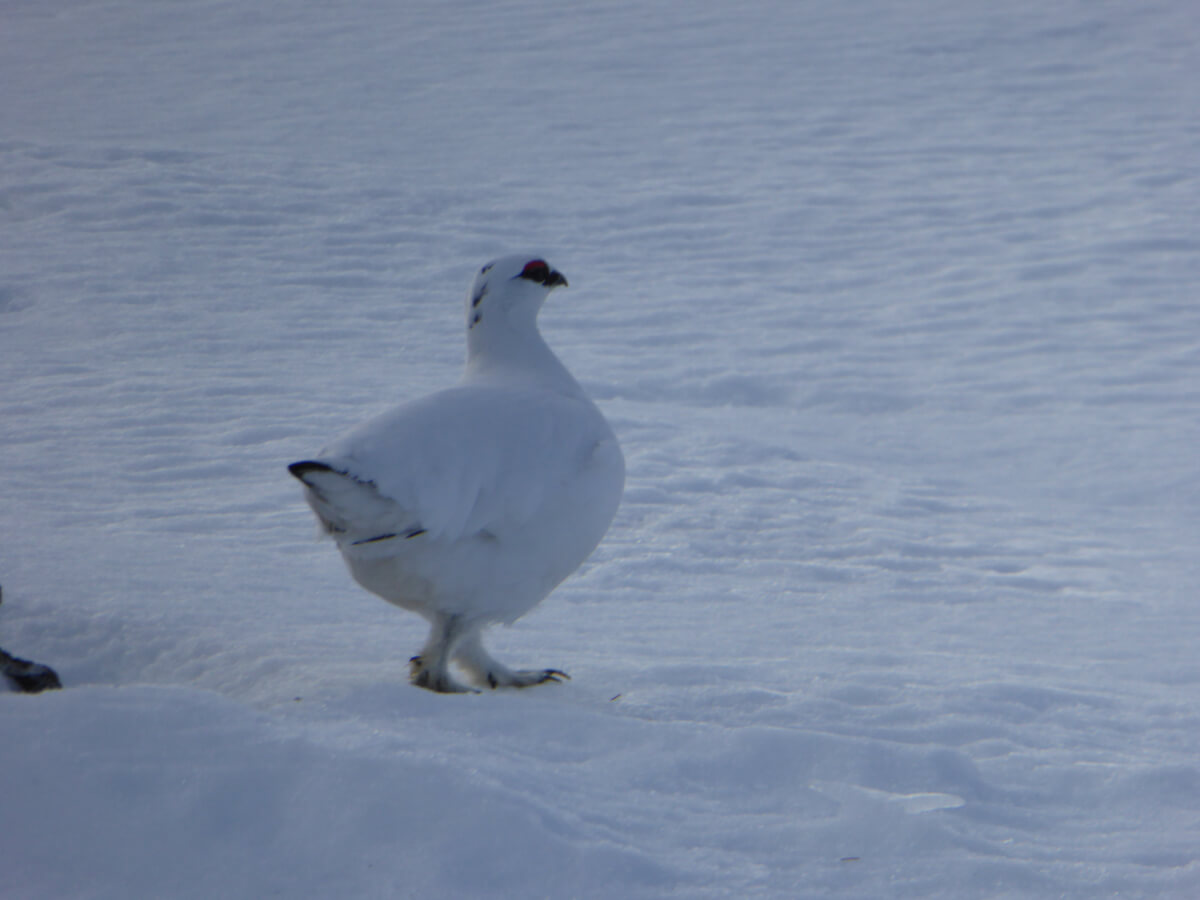
A ptarmigan makes walking across the snow look easy
Popular winter hiking routes in the Highlands include the West Highland Way, the Great Glen Way and the Speyside Way; which transform into a winter wonderland, offering panoramic views of snow-capped peaks and frozen lochs. The Cairngorms National Park, with its diverse trails, provides opportunities to witness the Highland wildlife amidst the winter spectacle; and for the intrepid this area can become a wilderness for the most intrepid to explore and indulge in winter sports and adventures like snow holing.
Hiking in the Highlands during winter is not just a physical adventure but also a journey into solitude and reflection. The silent majesty of the snow-covered landscape imparts a sense of serenity, inviting hikers to connect with nature on a deeper level.
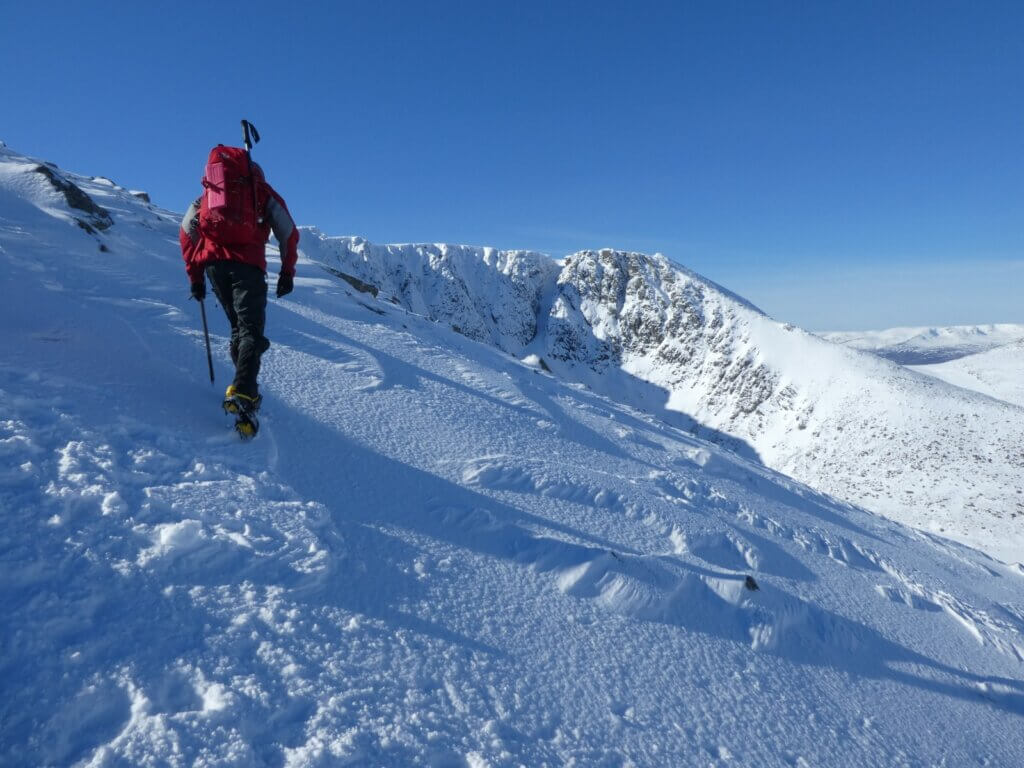
Cozy hostels nestled along the trails and in the villages close by offer refuge after a day of winter exploration. Hostels provide a welcoming retreat where hikers can share stories and relish in the hearty warmth of local hospitality.
Winter hiking in the Highlands of Scotland is a testament to the enduring spirit of nature. It is an invitation to witness the marriage of untamed beauty and the thrill of adventure. So, lace up your boots, embrace the chill, and discover the enchanting transformation that occurs when the hills become mountains in the heart of a Highland winter.
Check out our range of guided winter walking holidays

Everyone loves an open fire, almost as much entertainment as the TV
Have you ever wondered what all the fuss is about? Scotland. Why? Especially in winter must be far too cold and far too dangerous. Take a look – yes, it’s proper winter but isn’t that preferable to wet rain, umbrellas and grey days with little to differentiate between summer and winter, except for the lack of leaves on the trees.
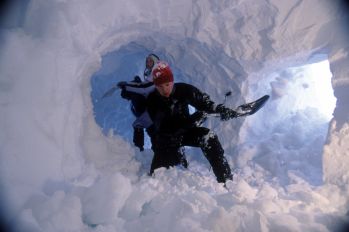
Photo Credit: Paul Tomkins/VisitScotland
Digging out a snow hole site in the Cairngorms under the guidance of Andy Bateman of Scot Mountain Holidays. It’s not quite Sweden’s ice hotel as you have to create the living space yourself, but they’ll have a relatively comfortable night out of the wind, cocooned in their sleeping bags enjoying being cooked for and served a three course meal by their guide.
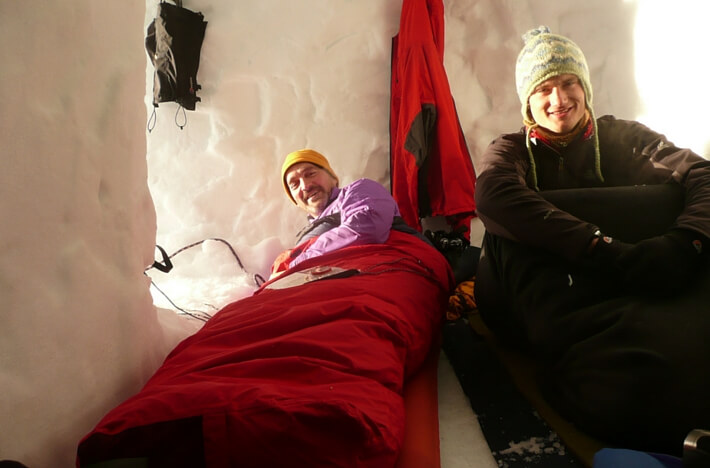
Build your own snow hole in the Cairngorms

Hiking along the ridges of Argyll, Kintail or Glencoe – space to yourself away from all the crowds and views which stretch for miles under clear skies. We often visit the west coast of Scotland in March to bag some winter Munros: we’ve run trips in Argyll, Glencoe and Kintail. For this year’s offering check the calendar or the Munro bagging page. Some of our clients have left from these trips with the most spectacular images – but those are for another blog.
Photo credit: Dave Downing
The beauty of Glenmore in the winter. Snow laden trees and cross-country skiing opportunities. Short days are not always a disadvantage as they allow for the most spectacular photographic opportunities, as seen above.

Safety skills for walking in the winter hills, demonstrated here by Andy Bateman – ice axe arrest. Legitimate playing in the snow, but as part of a learning process on how to avoid a sliding fall.
Scotland on a cold, clear, crisp day in winter. What’s not to like, especially if you like to take stunning pictures.
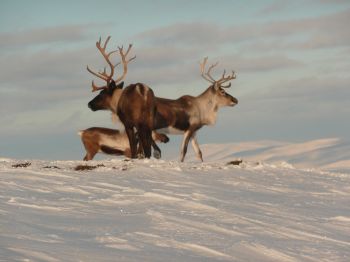
The Cairngorm Reindeer herd in their natural environment. When out walking in the Park, you can come face to face with the reindeer who roam the hills in winter.
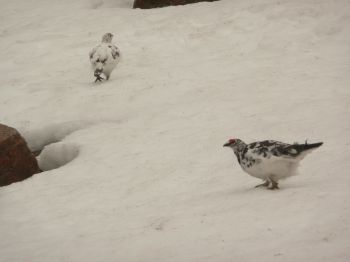
The Scottish Munros, particularly the Cairngorms, are the only area of the UK where you can spot Ptarmigan. Ptarmigan change their plummage twice a year – they have a summer coat, a breeding plummage and a winter coloration to blend in with the snow. You can almost step on the Ptarmigan sometimes as they like to conserve their energy by walking rather than flying if they can and they nest on the ground – there being no trees at the elevation where they are found.
a chance to savour some of Scotland’s most famous and unique produce. Haggis is a traditional meal to celebrate Scotland’s greatest bard, whose influence can be found everywhere from the Birks of Aberfeldy (where there is a thinking/writing seat dedicated to Rabbie Burns) to the Winking Owl in Aviemore, where the great bard is said to have taken breakfast. You might not even be aware of his influence on your own life from: “And we’ll tak a cup o’ kindness yet, for auld lang syne” – which you’ll have sung if you’ve ever brought the New Year in; to “O’ my luve’s like a red, red rose, that’s newly sprung in June” and a special Scottish grace for a meal: “Soem hae meat and canna eat And some would eat that want it. But we hae meat and we can eat, sae let the Lord be thankit.”
Burns Night is 25th January and is celebrated throughout Scotland with a haggis meal and the address to the haggis – written by Rabbie Burns.
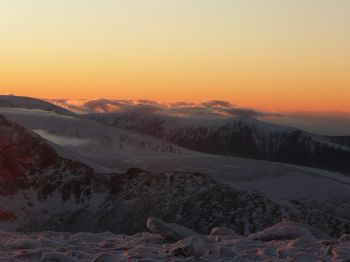
Scotland is famous for the colours of heather in the summer but the winter can be colourful too. This is the time of year that you’ll get to appreciate the sunset. The snow also reflects the light of the moon & stars if the sky is clear, so a night out in winter can be glorious.
snow will entertain the kids for hours and cost nothing, but make sure you’re well stocked with socks, gloves and hot chocolate!
Useful links:
Snow related activities for kids:
Free mountain weather service:
Met Office forecast for the hills:
Scottish Avalanche Information service:
There’s a lot to love about winter in Scotland – especially if you love the outdoors. The approach of winter just means that you can switch your “toys” (I mean gear) around and get some old friends out of the garage/cupboard. It’s nearly time to dust off the crampons and get the jumpers out so we thought it was time to remind you of the joys of winter.
Who doesn’t love a fresh coating of snow? It makes everything look clean and sparkly. Many of us (not just the kids) see snow and want to rush outside and make footprints. The arrival of snow brings out the inner child in all of us.
You can now legitimately light the fire and enjoy the warmth as well as the aesthetics.
Top tip though: make sure you have lodes your plenty of fuel inside before you begin, because the last thing you want to do is to leave the cosy warmth indoors to head outside for more fuel.
Need I say more – snowball fights are fun with the right kind of snow and can really be multi-generational.

Bring out your creative streak but if you’re going to go large you’ll find it quite a workout. What’s your preference to make his/her features. We’ve had to sacrifice several carrots.
It’s much more mesmerising than watching the rain and far less wet so it can even be enjoyable to watch the snow fall when you’re out in it so long as it’s not a blizzard and you’re not attempting to drive.
Not something everyone will be looking forward to but those who are in root will be looking forward to taking their sharp, pointy toys out of the cupboard and checking them over ready for the forthcoming season.
Why does snow make the landscape so much more attractive? I think it’s because the white of the snow brings out more contrasts and also makes everything look clean and neat. It’s also because the light is magical for taking pictures.
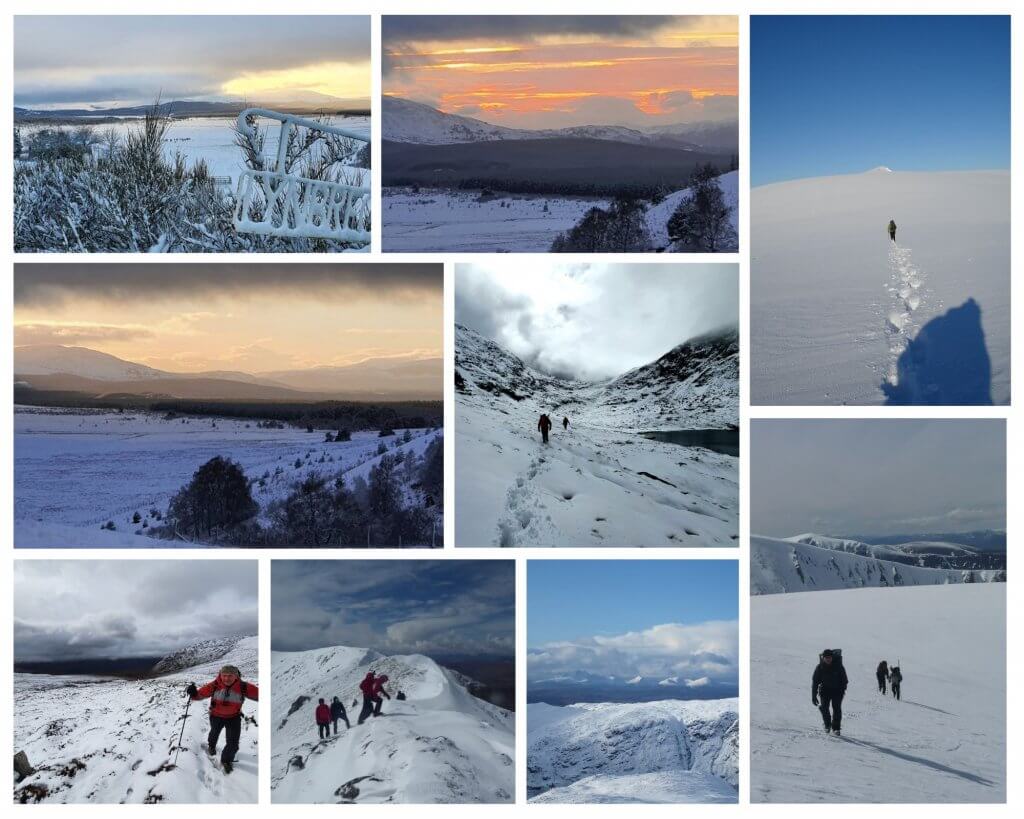
Time to break out all those lovely woolly jumpers.
One of the best things about winter is the lack of bugs, flies and midges.
Frost crystals are quite stunning when you look at them closely.
Look at the image below. Can you believe that all of this is accumulated frost built into the wind from the original structure? This is what the weather station on the top of Cairngorm.
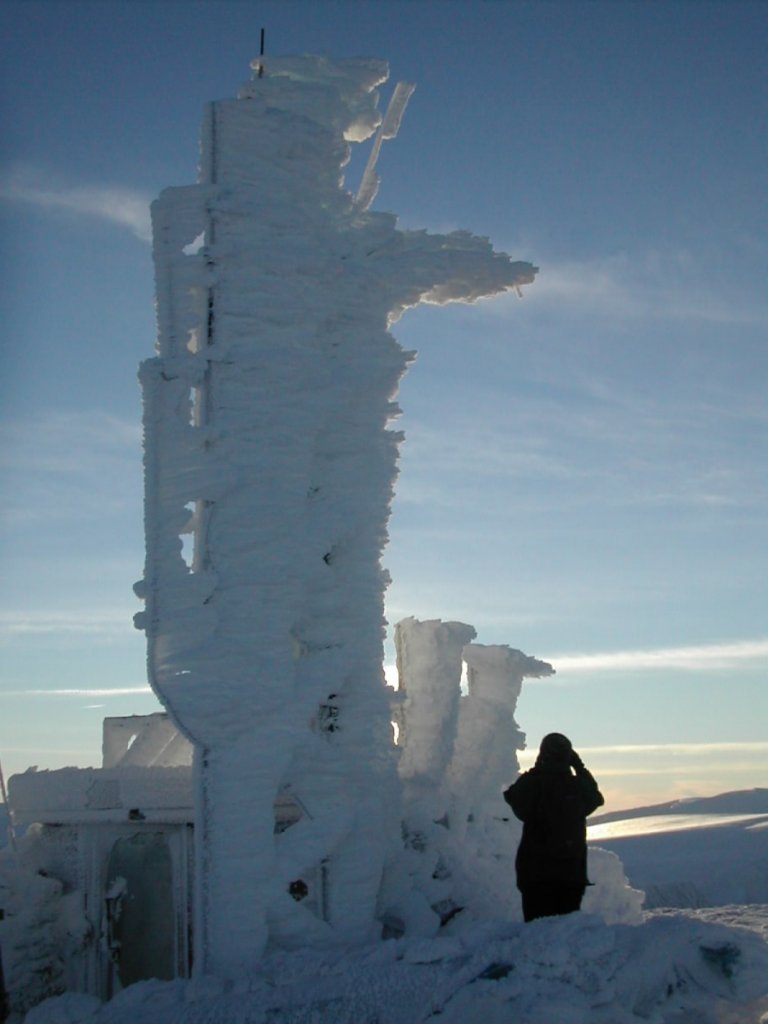
We are so lucky to be living on the edge of ski country. It still surprises us how many people, even those within the UK, who don’t know there is skiing available in Scotland. Yes, we might be suffering from the effects of global warming, but when the weather’s right – a ski day in Scotland is just about paradise.
Ice axe & crampons legitimate adult playing in the snow with sharp, shiny things during winter in Scotland.
When you’re not a kid any more, people tend to frown if you play in the snow. When you’re on a winter skills course, it’s encouraged learn about the snow and ice. You’ll have to slide down a slope with an ice axe, as you’ll need to learn how to stop a sliding fall.
You’ll have to cut holes in the snow, as you’ll need to know how to make emergency shelters – and so much more besides.
Views which stretch for miles are really a thing of winter. The air in summer is warmer and therefore hazier than winter.
Andy has had the privilege of being able to see from Cairngorm to Ben Nevis (55 miles) and has even picked up mountains well to the north all because the cold air is much clearer.
Winter is one of our favourite times of year. We try to keep it to ourselves. It’s not all that hard as so many people seem to be afraid of being cold.
The thing about being out in the winter in Scotland is all it takes is the right level of exercise and the right clothing and you’re sorted.
If you’re worried about it, why not let us be your guides.
We run our New Year Winter Walking trip every year on the same dates. It’s always a great trip and an ideal way to spend that period between Christmas and over the New Year; which can be lonely for some. It’s not always a sell out but it’s always great fun and includes the local street party in Grantown to bring in the New Year with a bang.
The New Year trip doesn’t include an overnight snow hole (all your nights are spent comfortably in the warmth at Fraoch Lodge). It’s a wee bit early in the snow season to be able to guarantee enough snow depth to safely build a snow hole. You will cover all the essential winter walking safety skills: how to use your ice axe, cramponing techniques, how to stop a sliding fall etc. No previous winter walking experience is required.
If you need any more persuading, check out the trip slideshow below:
<?php echo do_shortcode(‘
‘); ?>We’re busy pulling together the final details for all our winter Munro walking trips, including a planned return to the Glencoe area. Despite not having written the prose to promote this itinerary we do already have bookings so best to express your interest as soon as possible.
We are delighted to announce our new, revised itinerary for our Winter Munros trip in Glencoe. We will again be based at River Mill Cottage and will be following the itinerary below as closely as the weather allows:
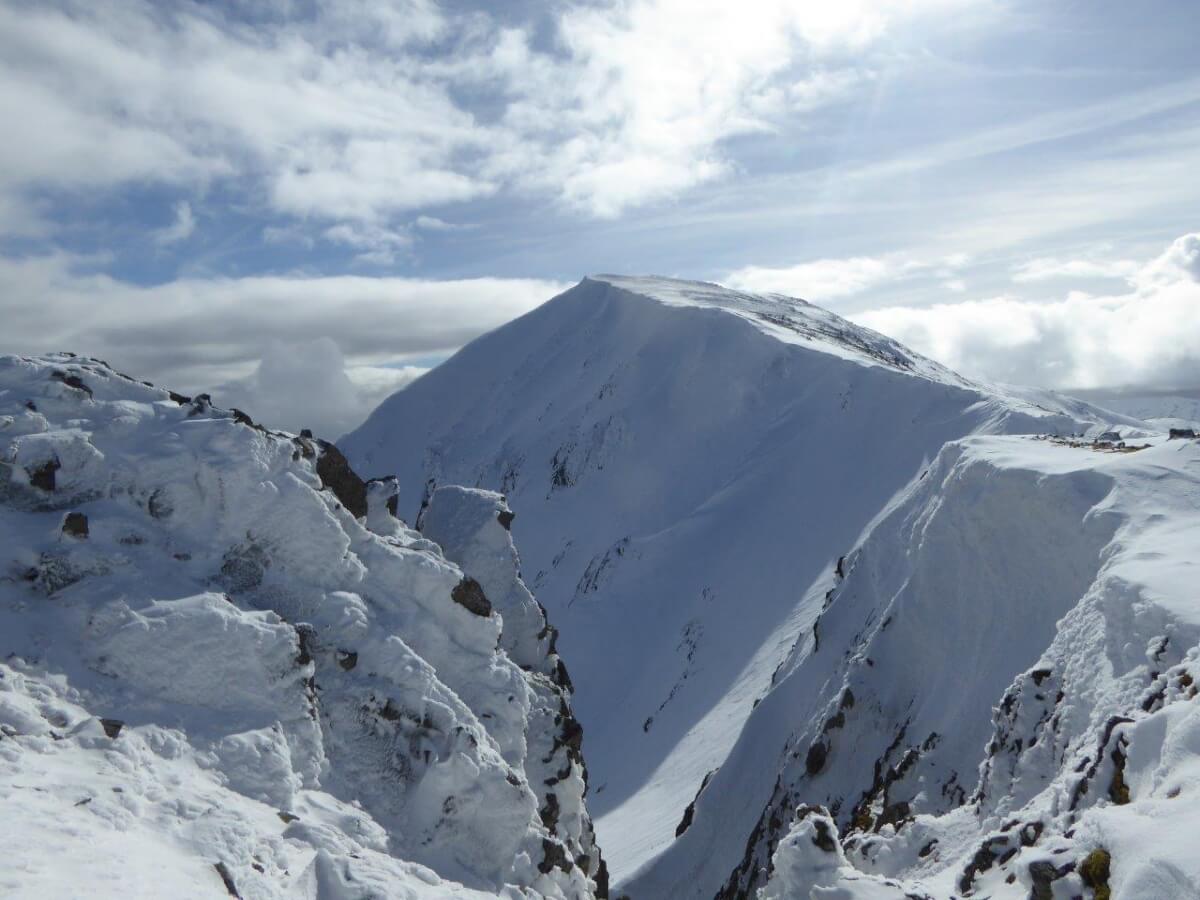
We have been in the Glencoe area before and have designed other itineraries for previous groups. Please do feel free to check these out in the private groups section, but bear in mind that in order to run one of these other itineraries for you we will need plenty of notice in order to arrange accommodation for your group and make sure that there is availbility for your proposed dates. Ideally we would plan a private group tour at least 6 months in advance.
Please bear in mind that since the Covid pandemic it has become increasingly difficult to book accommodation in remote areas with limited options.
there are trails all round the area plus several centres with purpose-built tracks like Laggan Wolftrax and Glenlivet Bike Trails. Bikes can be hired from Mikes Bikes or Bothy Bikes in Aviemore.
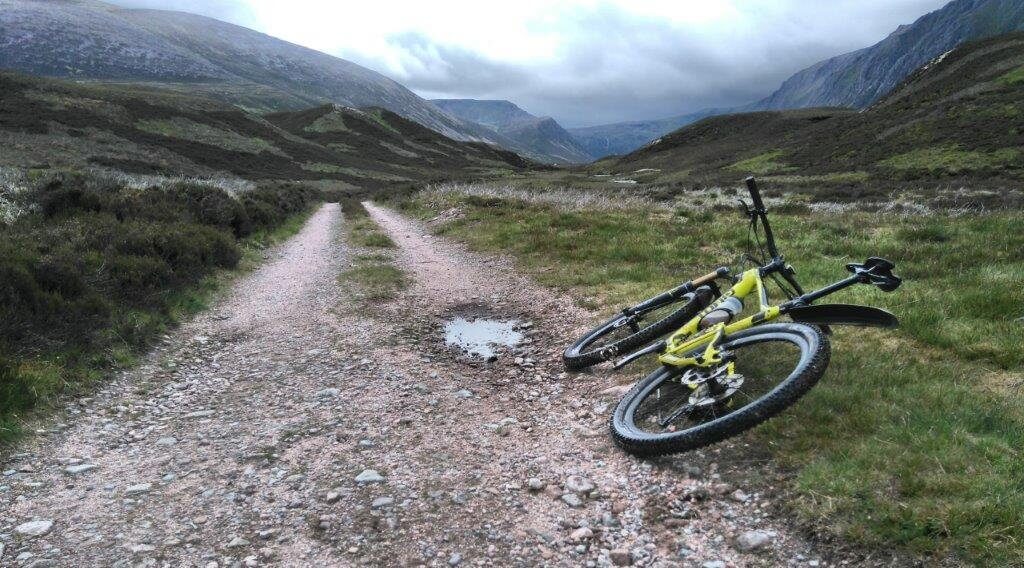
Enjoy the wild parts of the UK out on your bike
with G2 on the Alvie Estate.
Aviemore has a community ice skating rink again and you can also use the all weather rink at Loch Insh
you could take the public bus to Boat of Garten (5 miles) or Nethybridge (8 miles) and walk back to Aviemore stopping in the Old Bridge Inn for a pint on your return.
and paddle the Spey;
canoe with the Moray Firth dolphins or kayak/canoe on Loch Ness.
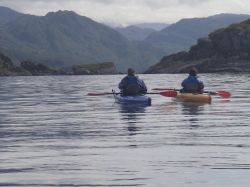
Water based options might not be as appealing as you think, but water is surprisingly warm in the winter.
a tour to Loch Ness is a popular option for our guests at Fraoch Lodge
and check out the Findhorn Foundation or visit the Kimberley Inn for lunch and walk along the white sands of the beach.
and try out ice skating.
unfortunately the Aviemore pool at the Macdonald’s resort is not currently available to the public for swimming.
and tour a distillery plus visit the Cooperage
Always a wet or cold day option – a distillery visit or whisky tasting.
or Johnston’s wool mill in Elgin if Knockando is closed. Tours are every hour until 3 or 4pm and are free of charge.
where you can experience the whole wool story from shorn fleece to completed material.
Get crafty if you’d like some time and space to knit, ask Rebecca for recommendations

If you like to see reindeer, you should come to Aviemore, particularly in the winter which is their natural habitat.
and/or the Highland Folk Museum
Traditional village which is part of the Newtonmore Highland Folk Museum
New website for the Cairngorms National park highlighting selected experiences within the park – cairngormsnationalpark.co.uk
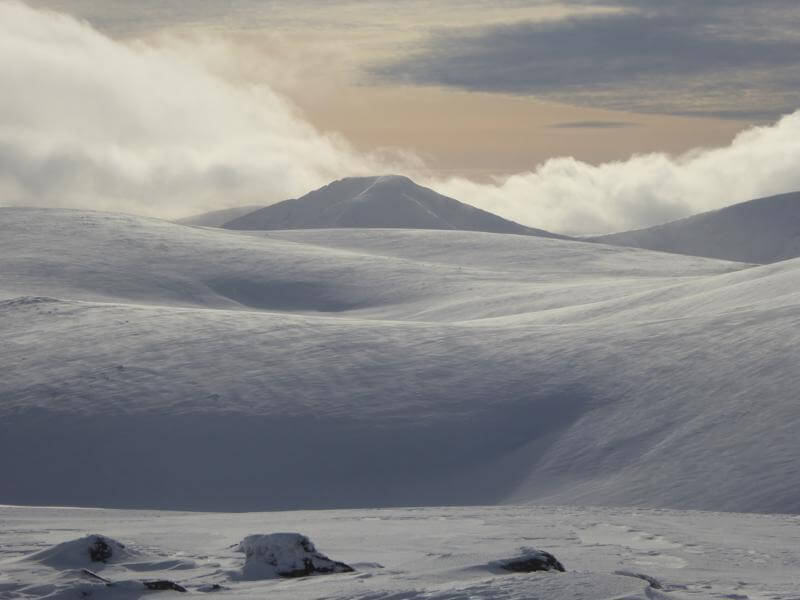
Photo Andrew Bateman, Spot Lochan Buidhe! Looking across the Cairngorm-Ben Macdui plateau towards Cairn Toul.
Come the winter months, one might be forgiven for thinking that lochs, lochans, tarns, lakes, etc would at least indicate their presence by a flat surface. Some do but don’t bank on it! High in the Cairngorms there are 3 lochs, all within 3 km of each other and all behave differently in winter.
Starting with the highest, Lochan Buidhe. It is perched on a broad shallow saddle at 1125m on the Cairngorm – Ben Macdui plateau close to where the Curran Hut once sat. Its high elevation and shallow nature mean it can pretty much freeze solid! Its bed is of raised granite blocks set in gravel. The blocks support the ice whilst allowing the ground water to drain out and so it can support no end of drifted snow thereby losing its dead flat surface.
At around 920m we have the pools on the floor of Coire an t-Sneachda. Again these are fed by ground water and drain out through the blocks and moraine to the north. Their water levels can vary considerably over time depending on the recent rain/melt. Frequently they will freeze over and then the water drains out from underneath the ice. The remaining ice sags under its own weight and the boulders punch through, again losing the flat surface. Any evidence of the pool can then be obscured by further snowfall.
Loch A’an – winter navigation & water features
Loch A’an (Avon) on the other hand self-levels since it’s much deeper. Remember water’s density is greatest at 4 Deg C so the warmest part of a loch is the bottom. Any snow drift on top of the surface ice will push it down into contact with slightly warmer water and melt it. The buoyancy is lost and over time the drift simply levels with the rest of the surface ice thereby maintaining a flat surface.
These tips and plenty more insights are covered on our 2 day winter navigation course
All content © Copyright Scot Mountain Holidays 2024
Responsive web design by Summit Web Solutions